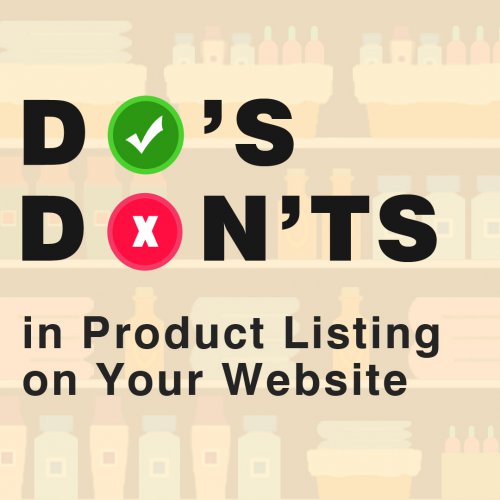
When listing products in an e-commerce store, it's important to follow best practices and make strategic decisions.
Here are some tips:
Plan before you start:
Take the time to plan your product listing strategy. Consider your target audience, product categories, attributes, and any specific requirements or guidelines for your e-commerce platform. Planning ahead will help you create a consistent and organized product listing structure.
Don't use non-licensed photos:
It's essential to use high-quality product images that you have the rights to use. Avoid using non-licensed or copyrighted images without permission, as this can lead to legal issues. Use original product photos or obtain proper licenses for any images you use.
Don't steal, use original content:
Plagiarism is a serious issue. Create original and unique product descriptions, avoiding copying content from other sources. This not only helps with search engine optimization (SEO) but also builds trust with customers and sets you apart from competitors.
Import from CSV:
If you have a large number of products to list, consider using a CSV (Comma-Separated Values) file to import your product data. This method allows you to create a spreadsheet with all the necessary product details, including titles, descriptions, prices, and attributes. Importing from a CSV can save time and ensure accuracy when listing multiple products. Start your online e-commerce store immediately on VistaShopee. Import your products through CSV and go live.
Start free: https://vistashopee.com/startnow
Import from Library:
If you have a product image library or repository, consider importing images directly from there into your e-commerce platform. This can help you manage and organize your images efficiently, ensuring consistency and easy access to visuals for each product.
Use options and sub-options:
Depending on the complexity of your products, utilize options and sub-options to provide customization or variations. Options allow customers to choose different product attributes (e.g., size, color) while suboptions further refine those choices. Properly implementing options and suboptions can enhance the customer experience and simplify the purchasing process.
Remember to optimize your product listings for SEO by using relevant keywords in titles, descriptions, and metadata. This can improve your website's visibility in search engine results and attract organic traffic.
By following these practices, you can create a well-organized, visually appealing, and informative product listing experience for your customers, increasing the chances of conversions and customer satisfaction.